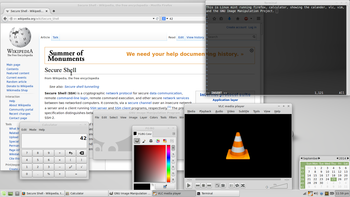
Open-source software ( OSS ) is a type of computer software in which source code is released under a license in which the copyright holder grants users the rights to use, study, change, and distribute the software to anyone and for any purpose. Open-source software may be developed in a collaborative public manner. Open-source software is a prominent example of open collaboration. Open-source software development can bring in diverse perspectives beyond those of a single company. A 2008 report by the Standish Group stated that adoption of open-source software models has resulted in savings of about $60 billion (£48 billion) per year for consumers.

The Open Source Initiative's (OSI) definition is recognized by several governments internationally as the standard or de facto definition. In addition, many of the world's largest open-source-software projects and contributors, including Debian, Drupal Association, FreeBSD Foundation, Linux Foundation, OpenSUSE Foundation, Mozilla Foundation, Wikimedia Foundation, Wordpress Foundation have committed to upholding the OSI's mission and Open Source Definition through the OSI Affiliate Agreement. OSI uses The Open Source Definition to determine whether it considers a software license open source. The definition was based on the Debian Free Software Guidelines, written and adapted primarily by Perens. Perens did not base his writing on the "four freedoms" from the Free Software Foundation (FSF), which were only widely available later. Under Perens' definition, open source is a broad software license that makes source code available to the general public with rel
Development model edit In his 1997 essay The Cathedral and the Bazaar , open-source evangelist Eric S. Raymond suggests a model for developing OSS known as the bazaar model. Raymond likens the development of software by traditional methodologies to building a cathedral, "carefully crafted by individual wizards or small bands of mages working in splendid isolation". He suggests that all software should be developed using the bazaar style, which he described as "a great babbling bazaar of differing agendas and approaches." In the traditional model of development, which he called the cathedral model, development takes place in a centralized way. Roles are clearly defined. Roles include people dedicated to designing (the architects), people responsible for managing the project, and people responsible for implementation. Traditional software engineering follows the cathedral model. The bazaar model, however, is different. In this model, roles are not clearly defined. G

